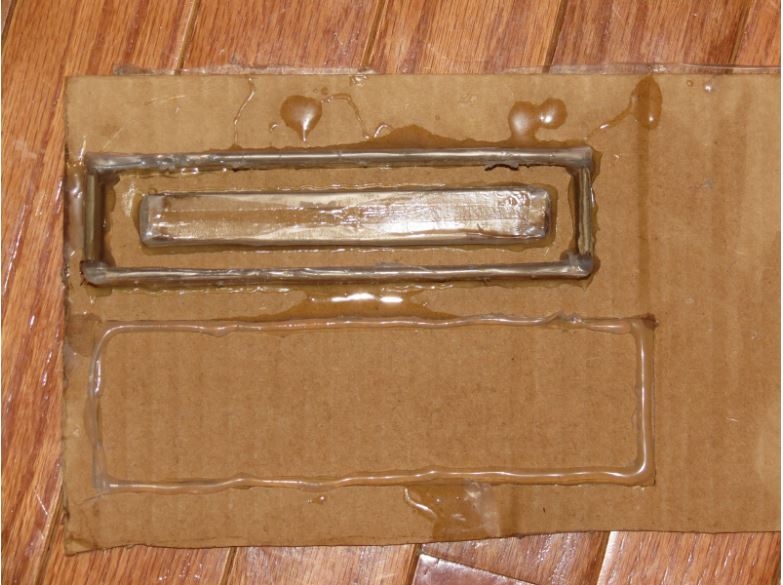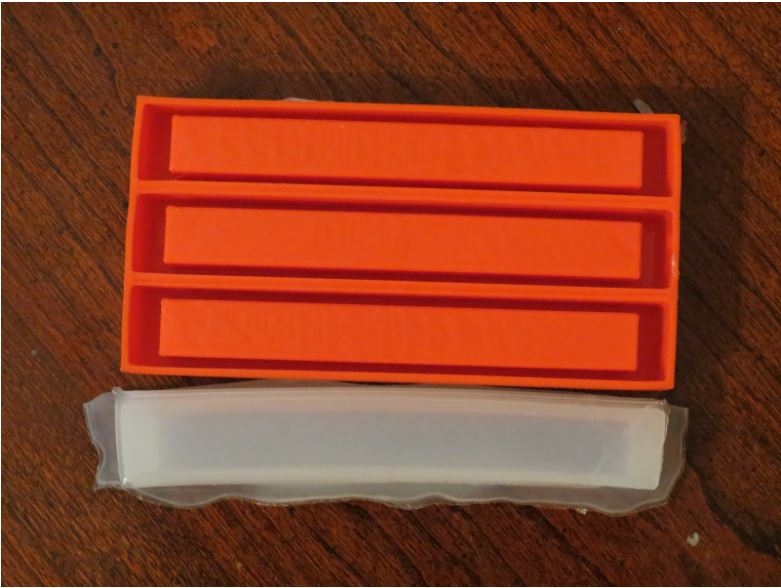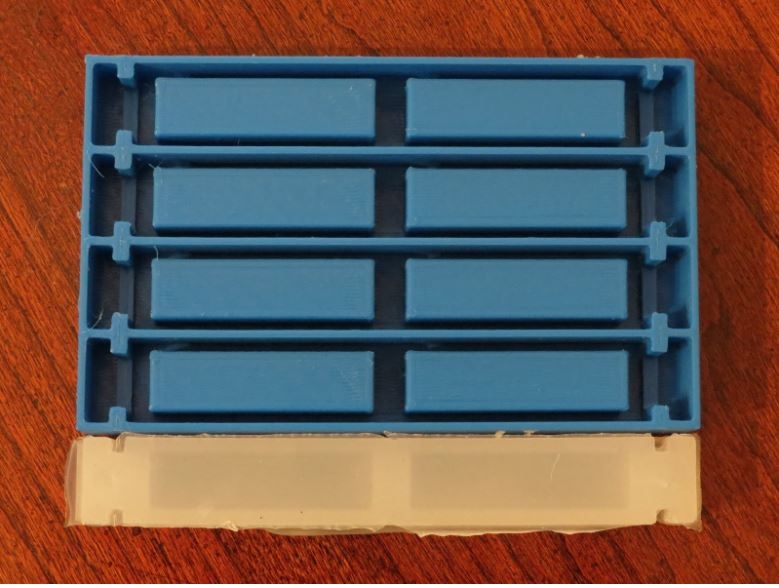| The robot is actuated by inflating silicone bladders. All of the bladders are hollow rectangles made of Ecoflex 00-30. Rectangular bladders were chosen because they were the simplest to produce. Early bladders were made using the cardboard mold process from the Soft Robotics Toolkit. Later bladder molds were fabricated on a 3D printer. After the hollow cavity cured, the mold was placed in a shallow pool of rubber to complete the bladder. |
 |
The first bladder prototype was a simple hollow rectangle made using a cardboard mold. The walls of the bladders were about ¼ of an inch thick. These were used in the early development of the fabric-reinforced actuator. The eventual goal is for this type of robot is to be untethered. This required that both the compressor and the power source would need to fit on the robot. Bladders with thin walls require less air pressure to fully inflate. Using thin walls would mean that smaller, less powerful compressors and battery sources would be needed to run the robot. |
 |
The remaining bladder mold prototypes were fabricated on a 3D printer. Three wall thickness were tested: ⅛ inch, 3/32 inch, and 1/16 inch. All three thickness were able to inflate the sleeve without sustaining damage. However, since this prototype was tethered, they all exhausted at different rates. The 3/32 inch wall was chosen because it was a balance between thin walls and a workable exhaust rate. |
The bladders are tied to the sleeve with a zip tie. However, this turned out to be a design flaw. When the bladder inflated, the edges of the zip tie would cut into the bladder and eventually pop it. The solution was to increase the wall thickness on the each end of the bladder so that the zip tie was farther away from the inflated section of the bladder. Notches were added to the design to for zip tie placement.
|
The bladders prototyped are not designed specifically to expand linearly. They expand in all directions and the sleeve limits the radial expansion. While this is effective and acceptable, it is not efficient. If the bladder walls folded like an accordion, the bladder would already have a bias towards linear expansion and less energy would be wasted expanding radially. This is a consideration for the future versions. |
Copyright © 2024 The President and Fellows of Harvard College | Accessibility | Digital Accessibility | Report Copyright Infringement

